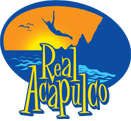Elevated Contamination at Four Beaches: Health Department
(Acapulco, NA 13 December) Four local beaches in the traditional zone of Acapulco have been identified as areas of elevated contamination by the local health department. They are Hornos, Suave (also called Aguas Blancas), Carabali and Caletilla. The contaminant in question is enterococos, a micro-organism that can cause illness in humans. It is found in most sea water near human populations, but usually in low concentrations, which are considered safe. In the case of the four named beaches, the health department concluded that the concentrations were elevated, principally at points where storm drains open out into the waters of the bay.
In the United States, the usual maximum safe concentration of enterococos is 100 colony-forming units per 100 ml of water. (In Hawaii, where the standards are the highest, warnings must be posted if the readings exceed 7.) In Acapulco, the maximum safe level is considered to be 200 units per 100 ml as a geometric average<(i> for readings along a beach. The four beaches cited did not exceed 200 on average, which would have required warnings or closures. However, peak readings were as high as 600 and 700 units per 100 ml near the drainage outlets. The enterococos contaminant is believed to be highly correlated with human pathogens found in city sewage.
The local health department stated that bathers are not at risk at the levels found on these beaches, but the readings should be taken as a warning to the city authorities and to the National Water Commission that protective measures must be taken to stop Acapulco's storm drains from making the contamination any worse.

